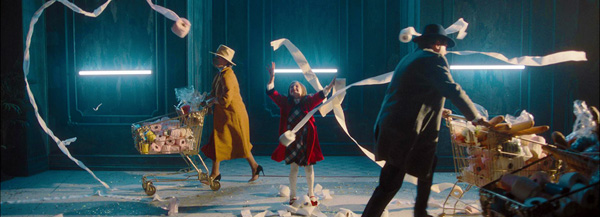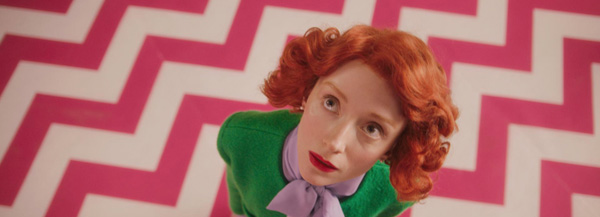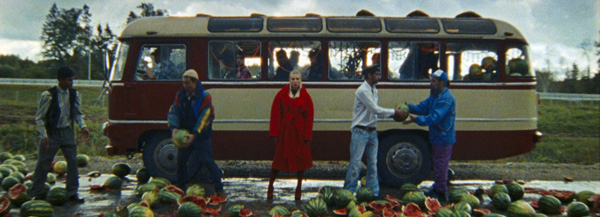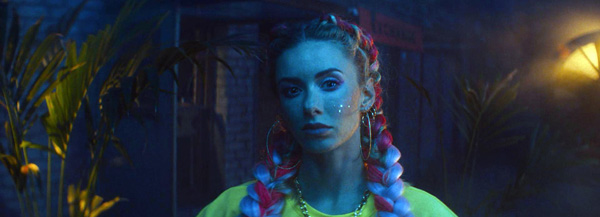
Colourists Artem Leonov and Timofey Goloborodko launched Artyficial, one of Moscow’s top colour grading studios, in 2018. The main profile at Artyficial is colour grading for commercials and music videos. Alongside that speciality, the studio includes a dedicated edit suite and also devotes time to R&D, such as creating production LUTs. Artem said, “I wanted to create a place where an artistic atmosphere meets the cosiness of a home. It's a small creative studio with the ability to recharge people's minds and souls. We are also kid and pet-friendly.”
At the time Artem graduated from university, he had a degree in marketing and a dream of becoming a systems administrator, as he had learned to love Unix and programming. He achieved his systems admin ambitions early on and started working in that field, until one day he met an editor who was working on a feature film on his Mac.
“My professional life switched from that moment,” Artem said. “The editor explained the basics of cinematography to me and taught me a lot. From then on, I spent all of my free time reading books about the making of cinema and anything useful about the industry that I could find online and in bookshops. Meanwhile, I started doing both editing and colour correction. But soon, helping directors and cinematographers emphasise their vision with light and colour became a more rewarding, powerful experience for me.”

Artem calls the process of creative direction a ‘shadow fight’, not only with respect to the artistic craft but also with people. The advertising industry feels quite cynical and harsh to him, for example, making it important to keep calm and be more human.
Searching for Tools
Initially working on Final Cut Pro, Artem later moved on to specialised colour systems such as Lustre, Davinci and Spirit Telecine. “At every step of this learning curve, I encountered limitations, but they taught me how to control and plan the job ahead,” he said. “FilmLight Baselight was the first professional grading system I worked on. With Baselight, I could concentrate on the creative part of the job.”
Today, the colourists at Artyficial work mainly on Baselight systems, and the studio has adopted FilmLight’s pipeline for its colour management and speed. “Flexibility, stability, performance and support – we took these four reasons into account before deciding on Baselight. We also have to think strategically and compared costs and return on investment with other grading software,” Artem said.
“At the time I first learned the system, it was already setting quite a high bar in comparison to other tools. Being a freelancer and then working in several different studios, I got to work on various other systems. Now after many years of hard work, with my own studio, I have finally been able to reunite with FilmLight, which I'm happy about.”

One of the best aspects of Baselight for their studio has been the FilmLight development team. Artem said, “We feel like we have direct interaction with the engineers and colour scientists who make it their job to meet the demands of colourists and implement their ideas, not just play games with marketing.”
Time Factor
Working on the commercials and music front typically means two to three different projects per day. The artists need to adapt fast and don’t often have time to deal with technical issues. Baselight allows rendering and grading in parallel, which saves time, and on the occasions that feature film projects come through the studio, Baselight has demonstrated stability and performance.
Artem said, “The Baselight tools we use most often are Dkey and the Texture Blend features, all of which save a lot of time., and we love the Slate control panel.” DKey is a 3-dimensional keyer that extracts out regions of the 3D RGB colour space in order to create a custom matte for secondary work. Users drag a bounding box over the image to sample and isolate the most useful range of colour, and once a matte has been created, they can switch back to the grading tools and make adjustments.
Texture Blend tools are related to the Texture Equaliser that divides the image into individually adjustable spatial frequency bands. Each frequency band has a separate Texture Blend control. The colourist can apply any colour grading operation to the bands depending on image detail, and keep fine control over the interaction of colour and texture, resulting in a smooth join between two images with a sharp-edged matte.
Standards and Stereotypes

The range of looks Artyficial is capable of creating is very wide. “One of our most difficult challenges is fighting standards and stereotypes, especially with commercials. Bright and sunny pictures are not everything, and branding can be overwhelming. We need a story – colour can’t replace emotions but it can make them richer. As for the technical part, Baselight has a toolkit that is good enough to let us deal with almost all client’s wishes,” said Artem.
“Overall, the Base Grade and Film Grade are the grading operators that we use the most – they are super clean and flexible. The shaders help a lot as well.” The Film Grade operator was developed from the grading tools manufacturers originally developed for the DI process, which were based on lab colour timing. After the colour correction in Baselight, the image is converted into a display colour space using a LUT. The colourist uses tools that recall working with film – exposure, contrast and saturation, plus shadows, midtones and highlights.
Base Grade is a newer kind of operator. It isn’t based on either a video signal or film stock, but on algorithms modelled on human perception. Base Grade works the same way in every working colour space, converting the image automatically into a linear colour space that restores the original brightness ratios of the scene.
No Strict Limits
“I have no strict limits for colour grading,” he said. “I'm working with so many different people that I need to guide the grade in different ways. I have my methods and vision but the work remains closely connected with the intent of the director and cinematographer, and with the form of the film.

“In my opinion it's important to be versatile but with a touch of your own soul and to keep learning, as a neverending story. In fact, I think that, more than any particular project, it’s the people I’ve worked with that have inspired me – directors and DPs certainly, but also other colourists, painters and so on.”
Artem and Timofey had known each other for several years before opening Artyficial, which they find certainly helps with the work. “We were working in different companies at that time, but had come to a point where we needed to start something new and personal. We are good friends and share tough moments as well as good drinks. If you calculate the total time spent in the studio together, you can call us family,” said Artem.
"The need for colourists to keep learning their craft, even after formal training is over, is always there. Today it's easier and harder, simultaneously. It's hard because there is too much information floating around. It's easy because you have access to great online courses and tutorials. I also like to talk with the cinematographers and directors during our grading sessions.”
Artem encourages colourists to watch movies of the masters from the past and present, try to find new ways of using the colour tools and listen to the DPs and directors carefully. "Keep a child inside you," he said. "This inner child can evolve your imagination.” www.filmlight.ltd.uk



